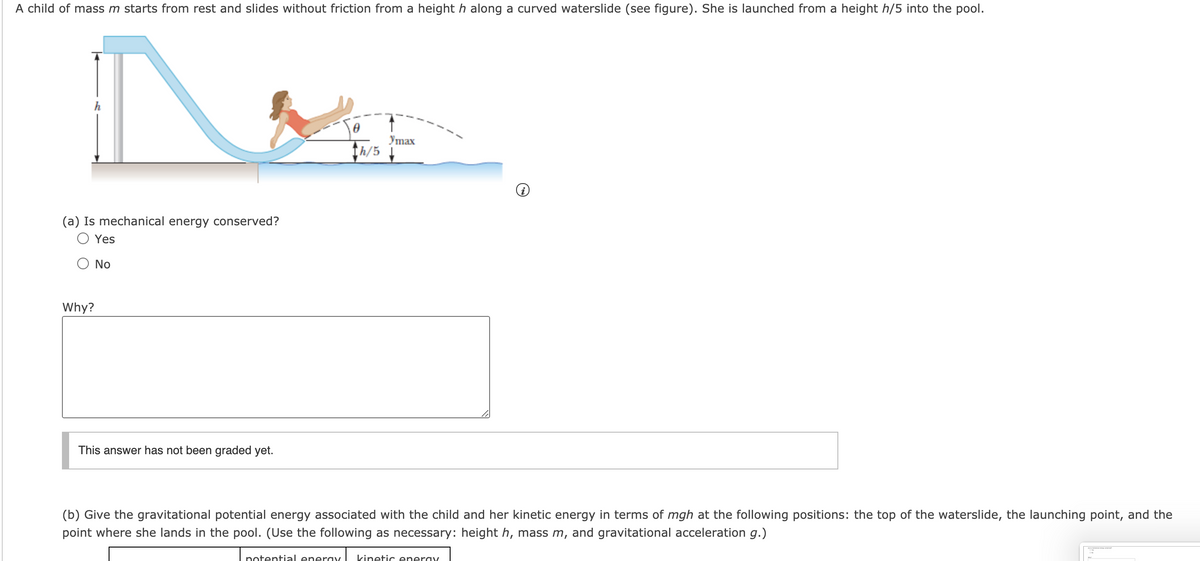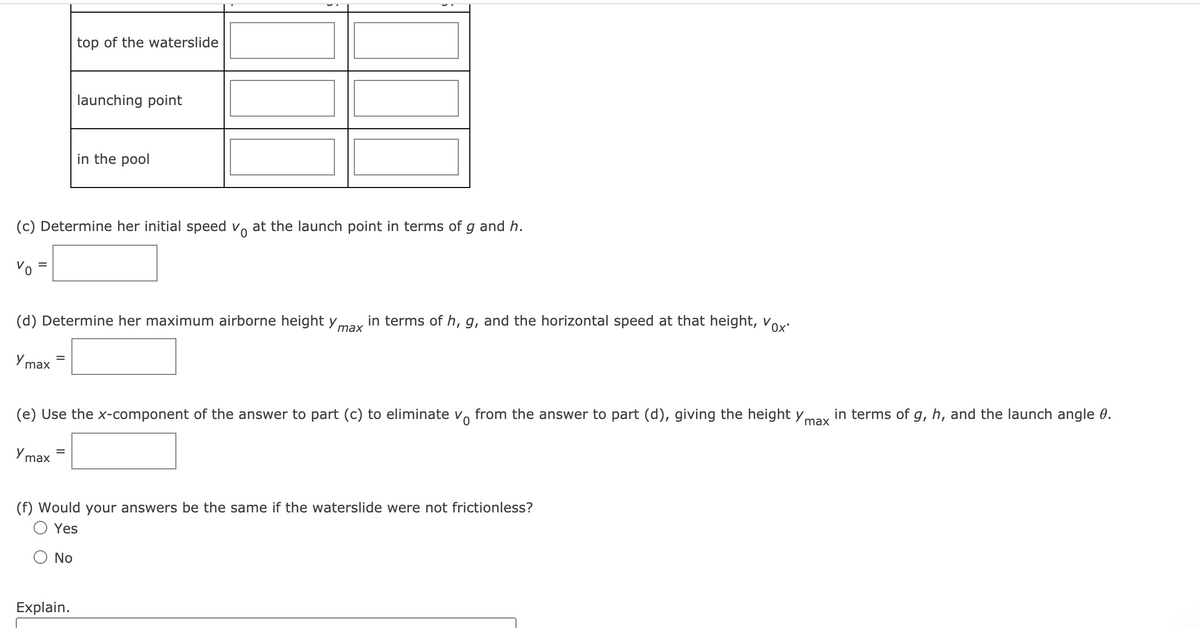d of mass m starts from rest and slides without friction from a height h along a curved waterslide (see figure). She is launched from a height h/5 into the pool.
d of mass m starts from rest and slides without friction from a height h along a curved waterslide (see figure). She is launched from a height h/5 into the pool.
University Physics Volume 1
18th Edition
ISBN:9781938168277
Author:William Moebs, Samuel J. Ling, Jeff Sanny
Publisher:William Moebs, Samuel J. Ling, Jeff Sanny
Chapter4: Motion In Two And Three Dimensions
Section: Chapter Questions
Problem 58P: You throw a baseball at an initial speed of 15.0 m/s at an angle of 30 with respect to the...
Related questions
Question

Transcribed Image Text:A child of mass m starts from rest and slides without friction from a height h along a curved waterslide (see figure). She is launched from a height h/5 into the pool.
Утах
th/5 4
(a) Is mechanical energy conserved?
Yes
No
Why?
This answer has not been graded yet.
(b) Give the gravitational potential energy associated with the child and her kinetic energy in terms of mgh at the following positions: the top of the waterslide, the launching point, and the
point where she lands in the pool. (Use the following as necessary: height h, mass m, and gravitational acceleration g.)
potential eneray
kinetic eneray

Transcribed Image Text:top of the waterslide
launching point
in the pool
(c) Determine her initial speed v, at the launch point in terms of g and h.
,Vox'
in terms of h, g, and the horizontal speed at that height, v
(d) Determine her maximum airborne height ymax
Y max
in terms of g, h, and the launch angle 0.
(e) Use the x-component of the answer to part (c) to eliminate v, from the answer to part (d), giving the height ymay
Y max
(f) Would your answers be the same if the waterslide were not frictionless?
O Yes
No
Explain.
Expert Solution
This question has been solved!
Explore an expertly crafted, step-by-step solution for a thorough understanding of key concepts.
This is a popular solution!
Trending now
This is a popular solution!
Step by step
Solved in 2 steps with 1 images

Recommended textbooks for you

University Physics Volume 1
Physics
ISBN:
9781938168277
Author:
William Moebs, Samuel J. Ling, Jeff Sanny
Publisher:
OpenStax - Rice University

University Physics Volume 1
Physics
ISBN:
9781938168277
Author:
William Moebs, Samuel J. Ling, Jeff Sanny
Publisher:
OpenStax - Rice University